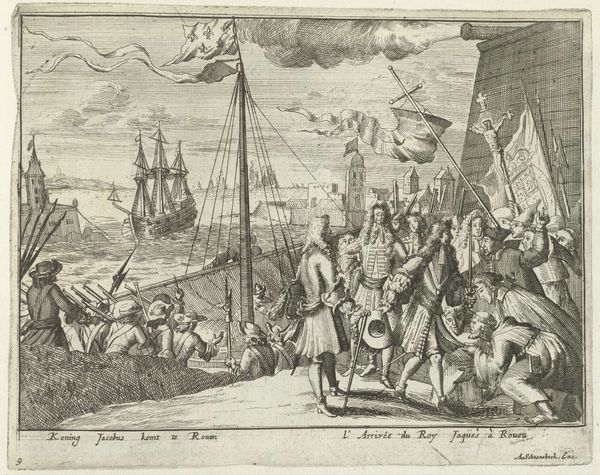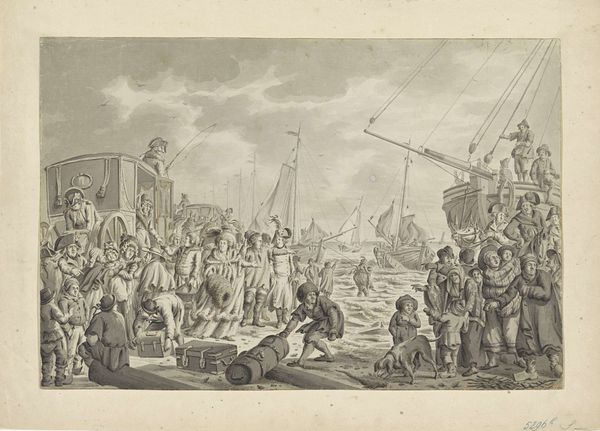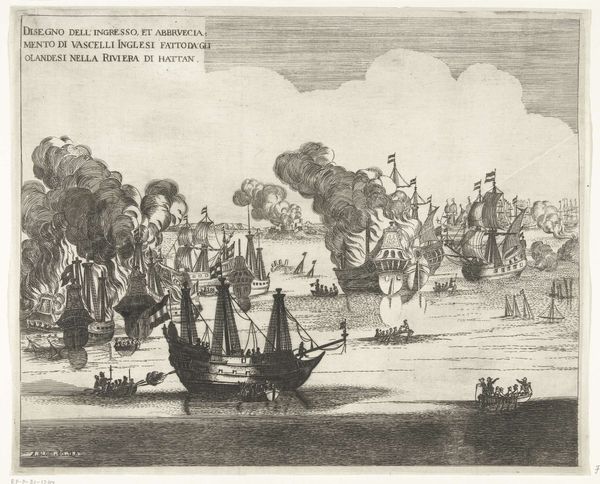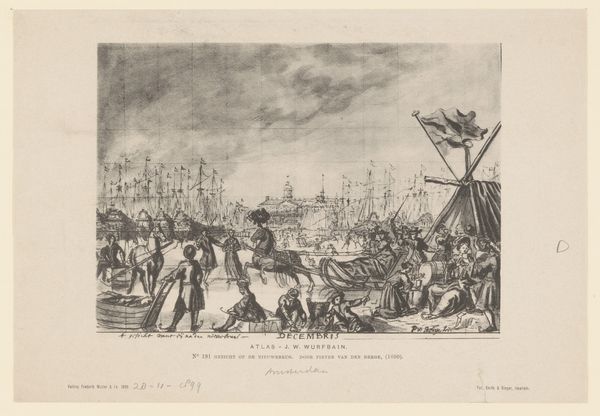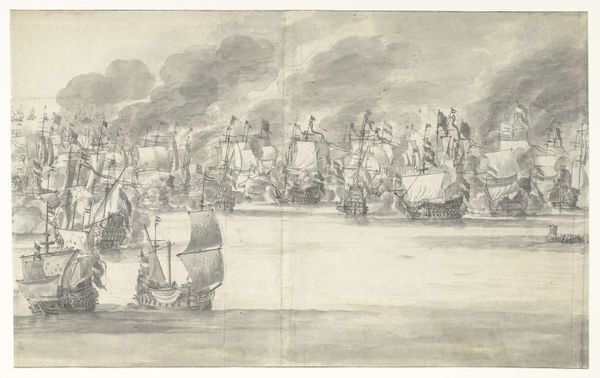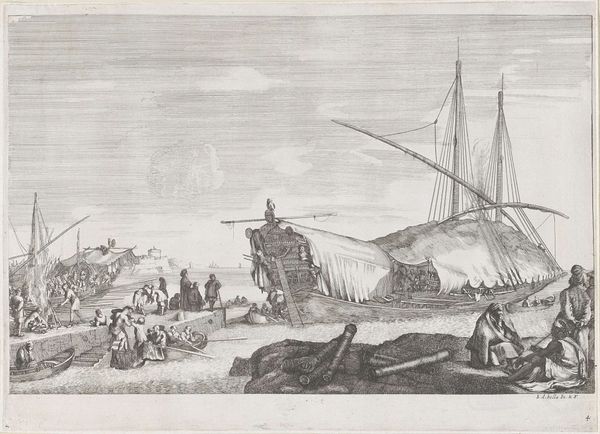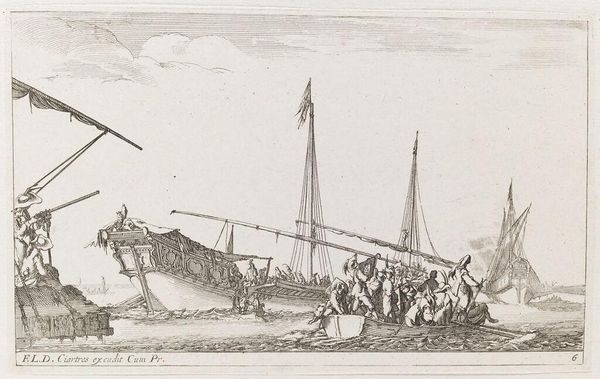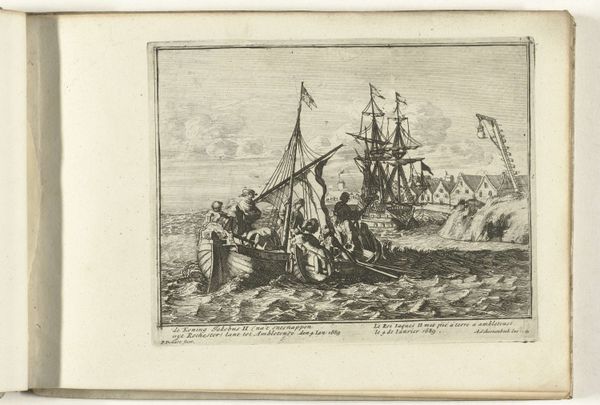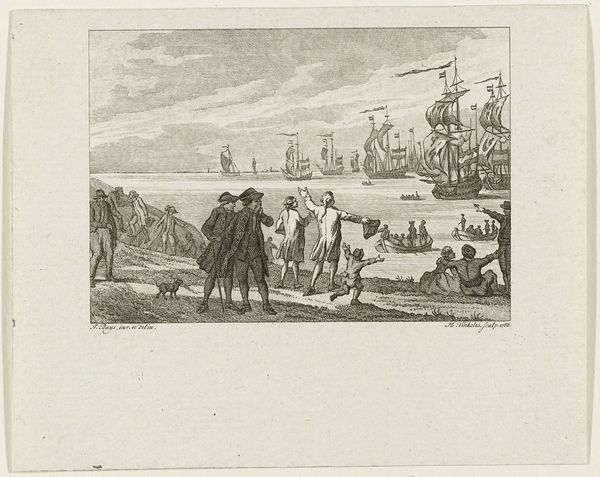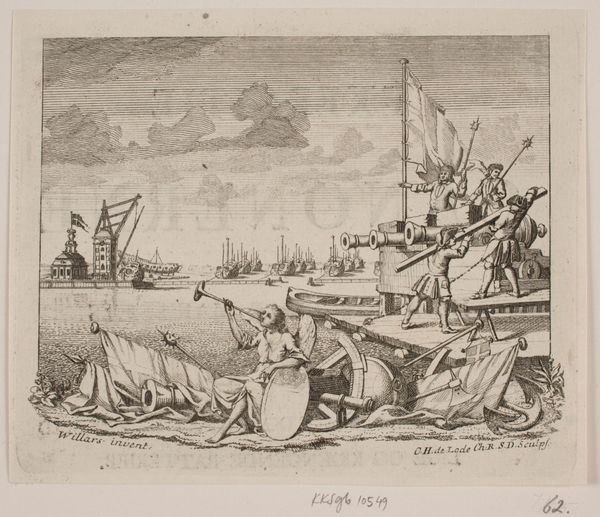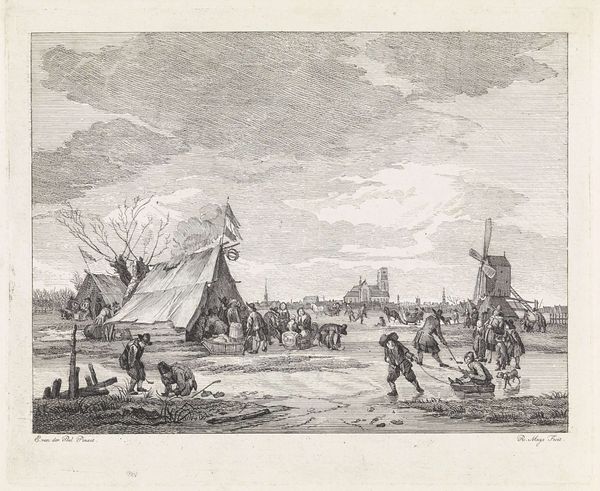
print, engraving
# print
#
old engraving style
#
romanticism
#
history-painting
#
engraving
Dimensions: height 271 mm, width 374 mm
Copyright: Rijks Museum: Open Domain
Curator: I am immediately struck by the energy in this print. It seems chaotic, yet controlled somehow by the artist’s hand. Editor: Indeed. This engraving, titled "Overrompelen van de boot van Jan van Speijk, 1831," commemorates a pivotal moment in Dutch history. It was made in 1831 and resides here at the Rijksmuseum. The artist has really captured the sense of Romanticism. Curator: It feels like a history painting, certainly a moment of high drama. All of the lines and the detailed depiction of figures… I’m wondering what it symbolizes. What narrative is embedded within it? Editor: Well, it depicts the events surrounding Jan van Speijk, a Dutch naval lieutenant who, rather than surrender his ship to Belgian forces, detonated it, killing himself and most of the crew along with many of the Belgian boarding party. A very specific cultural symbolism developed surrounding him, and it quickly became enshrined in Dutch political memory. Curator: So the overwhelming feeling it inspires, the busyness and the struggle, is deliberately constructed? Is it meant to illustrate a moment of intense moral decision-making or perhaps, even, martyrdom? Editor: Exactly! The scene is filled with symbolism. The Dutch flag flying proudly, the figures scrambling, all contribute to this heroic depiction. And remember, this print was produced shortly after the event itself, so it served a very immediate political purpose. It was crafted for quick reproduction to solidify patriotic feeling across the Netherlands at this moment in time. Curator: A calculated piece of national myth-making, then. A carefully designed emotional reaction. Editor: Yes, and look at how the old engraving style lends a certain gravitas, a feeling of authenticity and historical weight to the image, whether or not it is an objective picture. The power of the press! Curator: A complex interplay of symbolism and socio-political forces that continues to resonate even today. Editor: Indeed. Analyzing art like this helps us understand how visual imagery shapes our collective memory.
Comments
No comments
Be the first to comment and join the conversation on the ultimate creative platform.

